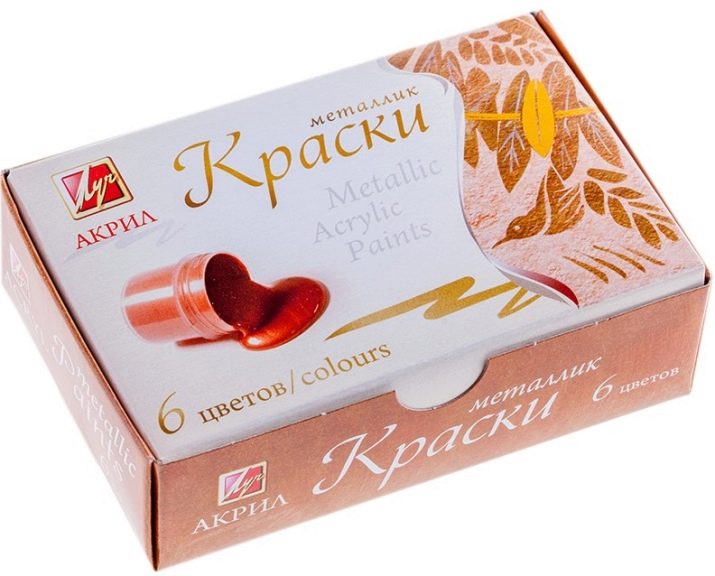What to do if the paint for painting by numbers has dried up?
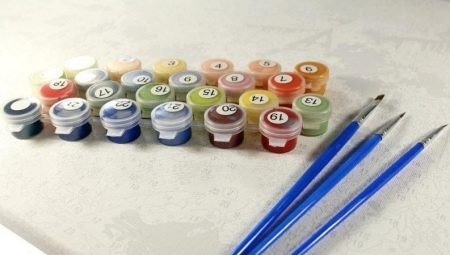
One of the most popular activities for spending free time was painting a painting by numbers. These kits are available almost universally and are relatively inexpensive. Their technology is simple; children, adults and the elderly can color them. The paint included in the sets is not traditional and familiar to us gouache or watercolors - it is an acrylic dye. It has its own characteristics, in particular - it dries quickly. The article below will tell you what to do if this happens.

Drying reasons
If the paint for paintings by numbers has dried, then this was the result of the influence of the following factors or actions.
- The manufacturer violated the manufacturing technology or used substandard materials.
- The paint container was not properly closed. Obviously, in this case, the paint dries very quickly.
- The paints were stored in conditions different from those described in the instructions. In particular, the rays of the sun are especially detrimental to them.
- Paints can dry out even if the painting is delayed and the lid is not closed at this time.
- The dye dries up if you open it too often.
- Paints often dry out after the expiration date.
- If the container has been damaged during transportation or use, drying cannot be avoided.
- In the open air, paint dries faster than indoors (provided the lid is open).
- As already mentioned, it is undesirable to expose dyes to direct sunlight. Under their influence, the solvent in the paint evaporates faster.

What can you dilute with?
The following substances are used to thin the paint.
Water
The easiest way to make acrylic paints liquid again is to dilute with water. Do not use water containing foreign substances or impurities.
It is best to take filtered or settled liquid. It is this kind of water that simply dilutes the dyes and does not affect their physical properties.
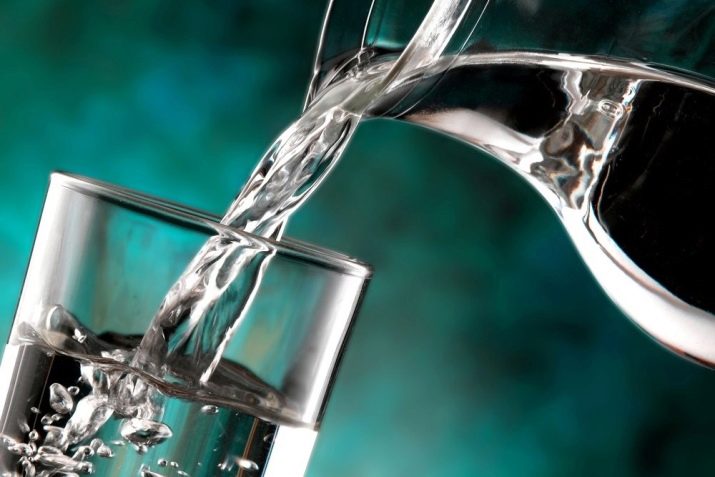
But water can affect the brightness and saturation of the paint when applied. Obviously, if you add too much water, the applied paint layer can become completely transparent. Also, after dilution with water, dried paints become slightly cloudy. For those who want to avoid this, it is recommended to use varnishes.
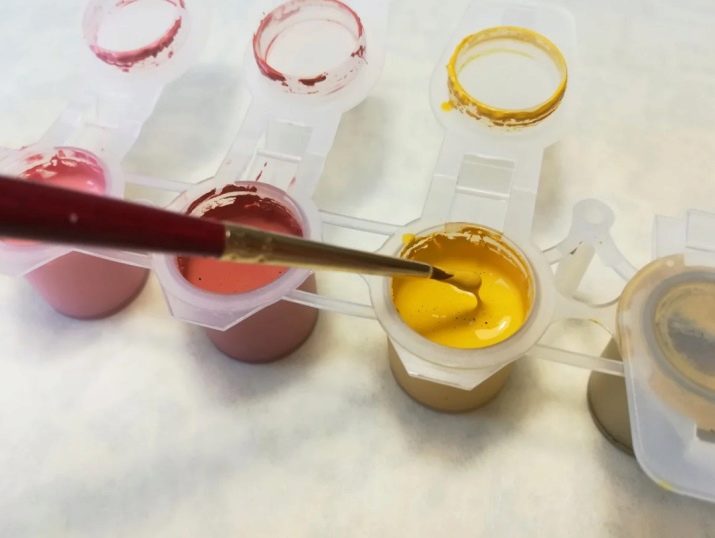
Specialized solvents
If the paints are dry, then solvents will help to dilute them quickly and relatively qualitatively. These products can affect the physical properties of the dyes - they can dry faster or slower, become dull or glossy after drying.
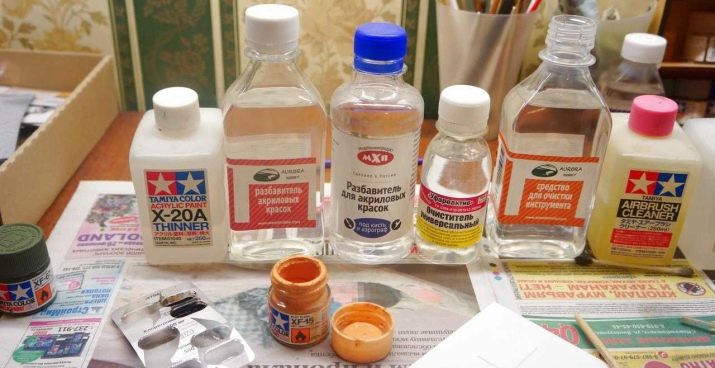
On some labels for solvents, you can find references to the consequences of use. Therefore, they must be used strictly according to the instructions and not done after the expiration date of the product. Do not violate the rules for the storage of solvents.
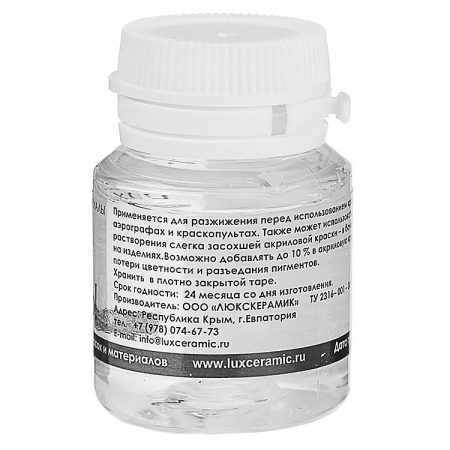
Products of such manufacturers as "Gamma", "Art-Acryl", "Sonnet" received good reviews. Professional artists recommend using these substances for thinning paints, not water. Although the use of the second substance is preferable for most people.
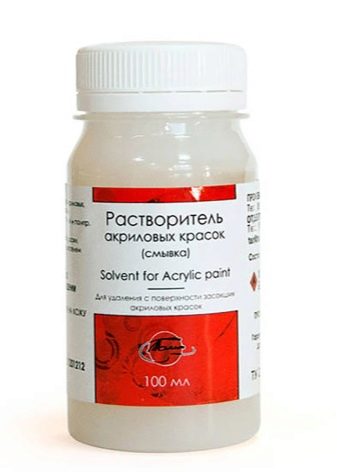
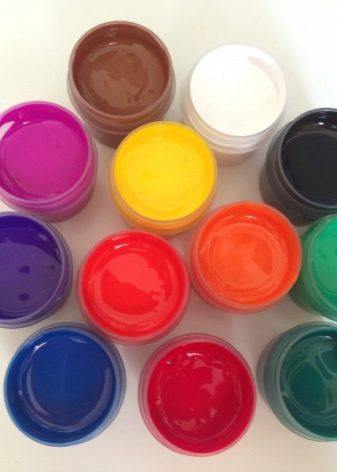
Thinners
They differ from solvents primarily in that they do not have clear instructions. These substances are not always purchased in specialized stores. These include gasoline, alcohol, kerosene, solvent and even turpentine.
The simultaneous use of water, solvents and thinners is allowed. The first two are often used together.
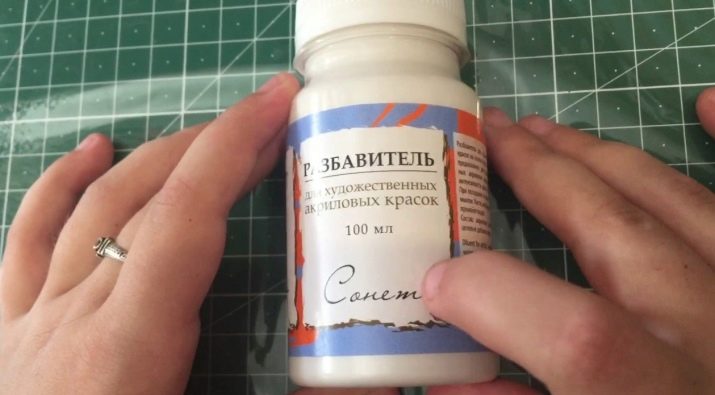
How to dilute correctly?
As you know, the sets of paints are poured into small containers. Nevertheless, even such a small amount of paint must be diluted separately. A palette works best for this. Before using a relatively large amount of paint, you must first dissolve a small amount on a damp palette. Carrying out this process, you can understand what approximately the amount of thinner will be needed in order to restore the paint without spoiling the intensity of the shade. Instead of a palette, you can also use a small container (lid from a dye jar).

If the paint has completely and hopelessly dried out, then you can do it right away in containers with paint. A small syringe is filled with solvent, diluent, or water and poured one drop into a container. The syringe can be replaced with a pipette. This should be done carefully, being careful not to add too much thinning liquid to the paint. Stir the paint after each drop. Dilute until lumps stop appearing in the dye. It is best to use a toothpick for stirring.
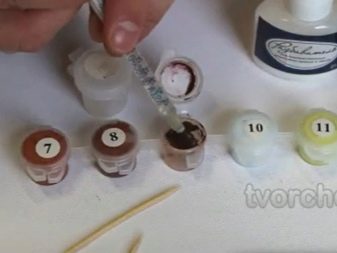
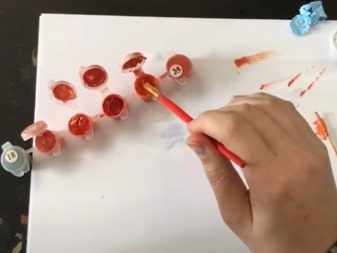
If you cannot dilute with water, and other diluents and solvents do not give results, then there is a “home” method. However, this method will still require water or solvents.
- The completely dried paint must be removed from the container and, if possible, crumbled into small pieces or grind into a powdery state. A household kitchen knife can help in this matter.
- Next, the powder paint is heated in a water bath or hairdryer.
- Then, small amounts of water or solvents / thinners are added to the heated paint (it should at least slightly melt). It is necessary to mix everything.


As a result, the dye will not acquire its original consistency and will have a large number of lumps. Nevertheless, it is believed that this method helps to partially restore the ability to use the dye for painting.
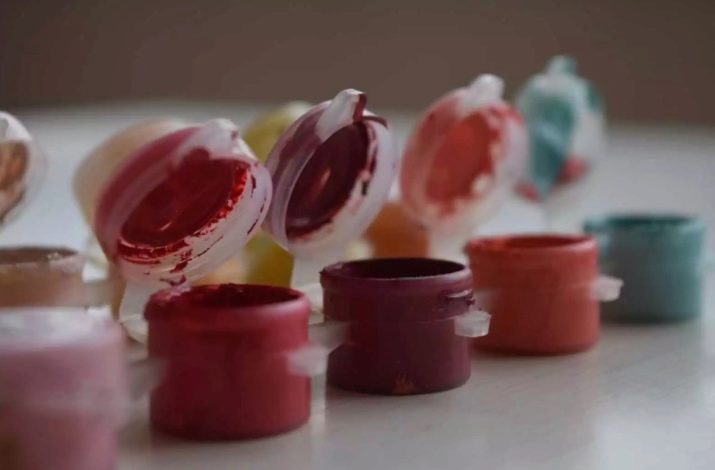
The following amount of water, solvents and thinners is considered optimal for paints of different consistencies.
- If the paint in the jar is liquid, then one drop of water or solvent will be enough.
- For a slightly thick dye, add 3-4 drops. Typically, this form of paint can be seen immediately after the first unpacking. This paint will not run.
- Thick colorant requires the addition of 5 to 10 drops of the appropriate liquid. It is a little difficult to paint with such a dye - during the process, you can feel the resistance of the brush.
- If the paint has acquired the consistency of plasticine, then more than 10 drops will be required. Ideally, a dozen drops of water and a few drops of solvent are recommended.
- For hard paints, the use of solvents or water is possible, although very undesirable. You will have to add too much, which will affect the quality of the dye. Therefore, it is recommended to use the above method.

Prevention measures
In order for the paint to continue to remain liquid and not dry out, you do not need to start unpacking the kit and open the dyes if you are not going to paint in the near future. If the paints are already unpacked, then they must be carefully closed and removed to a dark place.
A good option would be a heated basement, garage, wardrobe, storage room.
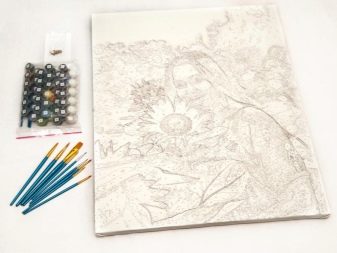
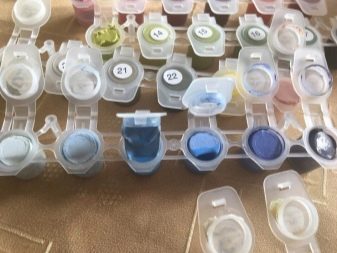
It is also worth mentioning once again the need to tightly close the lids of containers with dyes. After each session, the lids must be cleaned of dyes, the same should be done with the necks of the containers. Several layers of dried dye on the lid and neck will not allow you to close the container tightly, and there will be no question of tightness.

Do not leave the dyes open for a long time, and even more so absent from the drawing process. No need to paint outdoors. As already mentioned, this speeds up the solidification of the dyes. Dirty, substandard, or dry paint brushes will also have no beneficial effect on colorants.
It is necessary to rinse the brushes under running water after each use and slightly soak before use.
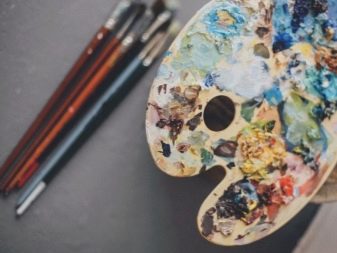
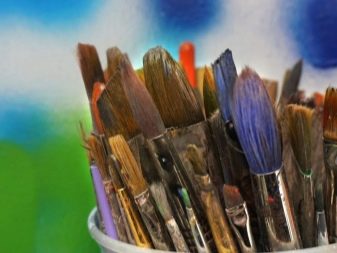
Useful Tips
- If water is used for dilution, it is best to pre-cool it slightly. Tap water must be boiled and defended. In other cases, the water is filtered.
- Always dilute in very small doses. This applies to all substances, even water.
- It is important to mix thoroughly after each addition of diluent.
- When painting, try to take a small amount of paint and transfer it to a palette or other medium, and close the container with the dye immediately.
- If any color is over, then do not rush to get rid of the jar. After rinsing thoroughly, it can be used as a small palette. It is also easy to breed.
- Diluting the paint not only makes it more liquid, but also increases its volume to a certain extent. If there is not enough paint before the painting is completed, then it can be slightly diluted. The main thing in this case is not to overdo it.
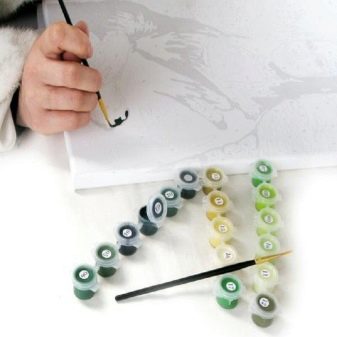

If it was not possible to "reanimate" the dried dyes, then you need to buy a set of acrylic paints. The most accessible and relatively cheap in this segment are sets from the manufacturer "Luch".
